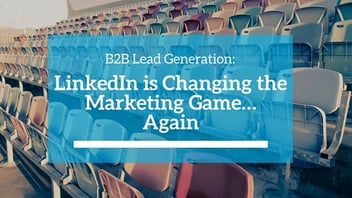
Who is Your B2B Buyer Persona? A Startup Guide
Reading time: 4 mins
Buyer personas are an excellent tool to identify exactly who your customers are and what they need. This will allow you to not only distribute your sales and marketing resources effectively, but could be helpful in the development of your product or services.
You may have a flawless product, but you still won’t be able to sell it to the wrong people. Marketing analytics beast Kissmetrics puts it bluntly:
“If prospects are constantly uninterested in your services, you may be targeting the wrong businesses. Gather the right data to develop targeted buyer personas.”
Every business will benefit by using buyer personas, but for this article, let’s focus on their importance for startups.
What is a Buyer Persona?
A buyer persona is a fictional character who represents your ideal customer. Although you should have one primary buyer persona, you will very likely need additional secondary ones. Each one is assigned characteristics based on demographics, challenges, goals and motivations, then given a name.
This is a little trickier in B2B marketing, than in B2C, but equally important. You must address the objectives and demographics of the business itself, but also customize your message to the person making the purchasing decision.
For instance, a startup offering outsourced IT services may be targeting CTOs of medium sized hospitals and independent banks, for whom privacy concerns are paramount, but may not have the resources of larger institutions. That buyer persona could be named Desperate Dan. Whereas, a successful entrepreneur having problems scaling the needs of a growing company may want to outsource all of her IT responsibilities. Call her Harried Hannah.
Some of the information will be based on hard data you have accumulated, while other traits may be the result of educated guesses or personal experience. In this way, one can gain a general sense of how an actual person will respond to a specific job position or your target market.
Buyer personas represent segments of your customer base who share common factors, such as:
- Size and type of business, revenue and other aspects of the business
- Challenges, pain points and fears – does your product or service solve a problem that keeps someone up at night?
- Objectives – growth, security, cost-cutting or streamlining operations - what is your persona measured by.
- Decision maker – the stakes are different for business owners, department managers and C-suite executives. Adjust your message accordingly to appropriate personas.
The goal is to make the persona, as real as possible in order to reach the real life profiles you seek.
How do buyer personas help your startup?
Simply put, the most successful products and services are those which best solve the problems of their users. In order to understand exactly what your prospects need, you have to truly understand what every step of their process is as relates to your product.
If you imagine what a typical day is like for your buyer persona, it will be easier to establish what the pain points are. Using the previous examples, that could entail examining a hospital stay for one patient from admittance to discharge, bank customer interactions from opening a checking account to using ATMs or the networking needs of a sole proprietor opening new branch offices.
This is vital information that will help your business in multiple ways.
Product: Imagine those same buyer personas going through the exact same day while using your product or service. Are the processes easier, cheaper, more secure? Do you need to make any tweaks, based on your characterizations?
Marketing: Buyer personas are absolutely necessary to create an effective marketing strategy. They allow you to precisely target segments that will benefit from your product, and therefore have the greatest potential for lead generation. They also make it possible to create personalized email messages, relevant content and landing pages for each persona, rather than casting a wider – and far less effective – net.
Sales: Becoming intimately familiar with the objectives, motivations, challenges and pain points of each buyer persona makes it so much easier to close sales. Rather than expounding on numerous features of a product or service, sales can point out the tangible benefits to a business, based on their specific pains, based on the buyer persona.
Resource allocation: This will not only aid in determining which advertising locations will yield the best ROI, but it will also allow you to establish which forums or social media networks are most worth your time.
Startups are often strapped for time and money, and have a far smaller margin for waste or error. Therefore, using buyer personas can have a significant impact on their success.
On the other hand, startups also often have the most difficulty defining their buyer personas. Fear of missing potential leads often drives startups to market too widely, rather than focusing specifically on those most likely to buy. And at times, the product itself isn’t as fine-tuned to the problems it is attempting to address as it should be.
Buyer personas help to eliminate those issues, but they have to be done right.
How to create a buyer persona
The most effective buyer personas are created using information gathered from the people who are already buying your products: your current customers. HubSpot offers a template with 20 questions to ask that will elicit the information that you need.
Of course, that doesn’t help a whole lot for startups who want to create a successful marketing strategy, but don’t have any clients yet. In this case, you brainstorm, and research top publications and social profiles. This isn’t a one-of task, the more you experience with prospects the better you learn who you should be targeting.
Now that you understand the whats, hows and whys behind building and utilizing a stellar B2B buyer persona, it’s time to get to work.



